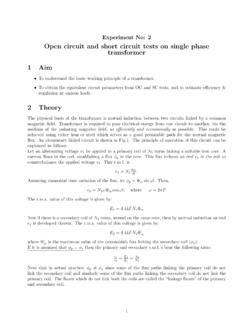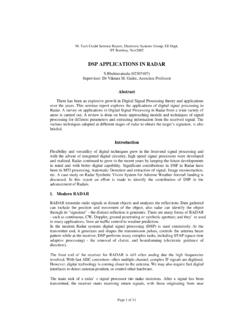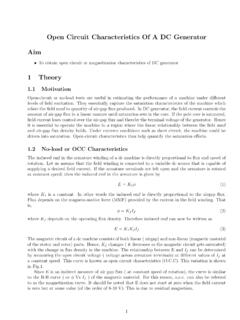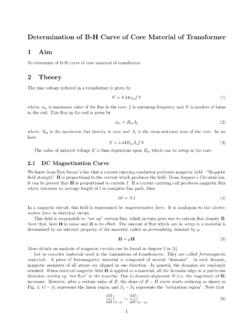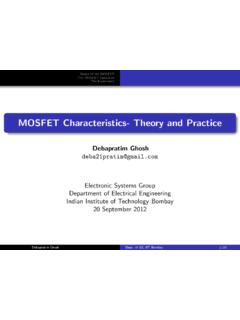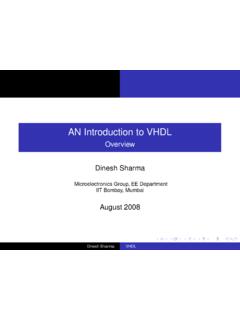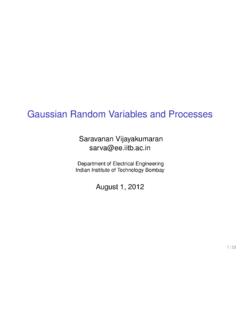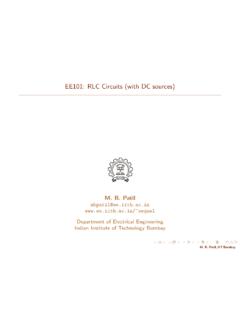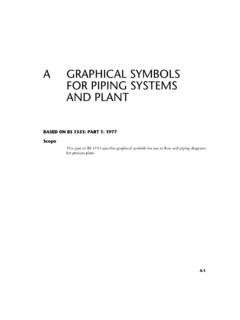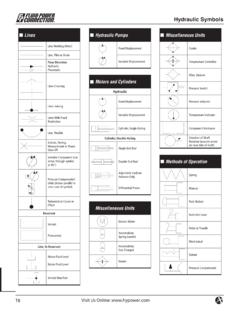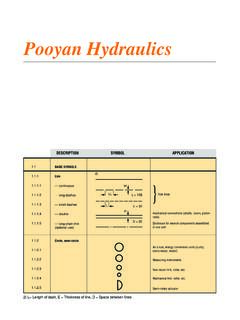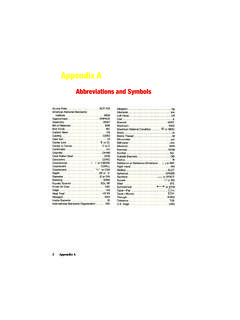Transcription of Graphic Symbols for Electrical and Electronics Diagrams
1 IEEE Std 315-1975 (Reaffirmed 1993)ANSI (Reaffirmed 1989)CSA Z99-1975(Revision of IEEE Std 315-1971 ANSI Z99-1972)IEEE Standard American National Standard Canadian StandardGraphic Symbols for Electrical and Electronics Diagrams (Including Reference Designation Letters)SponsorIEEE Standards Coordinating Committee 11, Graphic Symbols Secretariat for American National Standards Committee Y32 American Society of Mechanical EngineersInstitute of Electrical and Electronics EngineersApproved September 4, 1975 Reaffirmed October 20, 1988 Reaffirmed December 2, 1993 IEEE Standards BoardApproved October 31, 1975 Reaffirmed January 16, 1989 American National Standards InstituteApproved October 9, 1975 Canadian Standards AssociationApproved Adopted for Mandatory Use October 31, 1975 Department of Defense, United States of AmericaAuthorized licensed use limited to: INDIAN INSTITUTE OF TECHNOLOGY BOMBAY.
2 Downloaded on June 19,2015 at 16:40:20 UTC from IEEE Xplore. Restrictions apply. iiIEEE Std 315-1975(ANSI )31 October, 1975 Acceptance NoticeThe following Industry Standardization Document was adopted on 31 October 1975 for mandatory use by the indicated industry groups have furnished the clearances required by existing regulations. Copies of the documentsare stocked by DoD Single Stock Point, Naval Publications and Forms Center, Philadelphia, PA, 19120, for issue tomilitary activities of Document: Graphic Symbols for Electrical and Electronics Diagrams (Including Reference Designation ClassDesignation Letters)Document No. (a) IEEE Std 315-1975(b) ANSI of Specific Issue Adopted: (a) 4 September, 1975(b) 31 October, 1975 Releasing Industry Group: (a) The Institute of Electrical and Electronics Engineers, Inc.
3 (b) American National Standards Institute, : IEEE Std 315-1971(ANSI )Custodians:Military Coordinating Activity:Army - ELArmy - ELNavy - SHAir Force - 16 Review Activities:Army - AV, MI, MUNavy AS, OS, SH, YDUser Activities: Project Number: DRPR-0176 Army - MENavy - EC, MCCertain provisions of this standard are subject of International Standardization Agreement, ABC NAVY STD-28A, Symbols and Abbreviations for Electrical and Electronics Drawings, to which the Army also subscribes. Whenreaffirmations, amendment, revision, or cancellation of this standard is proposed which will effect or violate theinternational agreement concerned, the Military Coordinating Activity will take appropriate reconcilliation actionthrough military international standardization channels including departmental standardization offices, if : When reaffirmation, amendment, revision, or cancellation of this standard is initially proposed, thecognizant secretariat of the industry standard shall inform the Military Coordinating Activity of the proposed changeand request their participation.
4 Authorized licensed use limited to: INDIAN INSTITUTE OF TECHNOLOGY BOMBAY. Downloaded on June 19,2015 at 16:40:20 UTC from IEEE Xplore. Restrictions apply. iiiPreface to CSA Standard Z99-1975 C11 BGraphic Symbols for Electrical and Electronics DiagramsREXDALE, October 9, 1975 American National Standard (IEEE Std 315-1975), with the modifications shown in Section 100, has beenapproved as CSA Standard Z99. This action was proposed by the Committee on Electrical Symbols , under thejurisdiction of the Sectional Committee on Abbreviations, Definitions and Symbols and was formerly approved bythese Committees. See Section 100, Canadian Standard Z99 modifications to American National Standard on page 83. NOTE: In order to keep abreast of progress in the industries concerned, CSA publications are subject to periodicreview.
5 Suggestions for improvement will be welcomed at all times. They will be recorded and in due course broughtto the attention of the appropriate Committee for , requests for interpretation will be accepted by the Committee. They should be worded in such a manner as topermit a simple yes or no answer based on the literal text of the requirement concerned. All inquiries regarding this standard should be addressed to Canadian Standards Association, 178 Rexdale Boulevard,Rexdale, Ontario M9W 1R3, Standards BoardApproved September 4, 1975 Joseph L. Koepfinger, Chair Warren H. Cook, Vice Chair Sava I. Sherr, Secretary Jean Jacques ArchambaultRobert D. BriskmanDale R. CochranLouis CostrellFrank DavidoffJay ForsterIrvin N. Howell, JrStuart P. JacksonIrving KolodnyWilliam R.
6 KruesiBenjamin J. LeonAnthony C. LordiDonald T. MichaelVoss A. MooreWilliam S. MorganWilliam J. NeiswenderGustave ShapiroRalph M. ShowersRobert A. SodermanLeonard ThomasCharles L. WagnerWilliam T. WintringhamCopyright 1975 by the Institute of Electrical and Electronics Engineers, Inc. No part of this publication may bereproduced in any form, in an electronic retrieval system or otherwise, without the prior written permission of thepublisher. However, individual Symbols contained in this standard may be utilized without further permission of theIEEE. Any statement that the Symbols used are in conformance with this standard shall be on the user s licensed use limited to: INDIAN INSTITUTE OF TECHNOLOGY BOMBAY. Downloaded on June 19,2015 at 16:40:20 UTC from IEEE Xplore.
7 Restrictions apply. ivForeword(This foreword is not a part of American National Standard Graphic Symbols for Electrical and Electronics Diagrams , [IEEE Std 315-1975])This American National Standard is a revision and expansion of American National Standard Graphic Symbols forElectrical and Electronics Diagrams , (IEEE Std 315-1971). A variety of specialized Symbols originally used for aircraft applications have been added to make this standard morecomprehensive. To improve coordination with IEC publication 117, IEC approved versions of capacitor, transformer,delay, associated conductors and specialized ground Symbols have been added as alternates to those long used andstandardized in the United States. A number of small changes have made the existing material more closely parallel toIEC Publication 117.
8 Symbols have been added to cover additional devices in the photo sensitive semiconductor andspecialized semiconductor fields, as well as for an electronic flash lamp. Known errors have been corrected and someitems have been reference designation class letters were revised to include the added new device Symbols and to clarify the DS andLS categories. D is now listed as an alternate to the common CR for the common semiconductor diode family of the Symbols are designed so that their connection points fall on a modular grid. This should help those who usea grid basis for the preparation of Diagrams . By proper enlargement of the Symbols the usual coordinate-grid sizes canbe matched. Most Symbols appearing in this standard were reproduced form original drawings prepared for theMergenthaler substantial effort has been made to have this American National Standard compatible with approved InternationalElectronical Commission (IEC) Recommendations (IEC Publication 117, in various parts).
9 Electrical Diagrams are afactor in international trade; the use of one common symbol language ensures a clear presentation and economicaldiagram preparation for a variety of users. Members of the preparing committee have been active in transmitting USAviewpoints to the cognizant IEC Technical Symbols are shown only in those cases where agreement on a common symbol could not be attained at thistime. It is hoped that the number of alternative Symbols will be reduced in future Symbols in this standard represent the best consensus that can be attained at this time. Standardization, however,must be dynamic, not static, and any solution of a problem should be tested through use and revised if necessary. It isanticipated that the contents of this standard will be modified as future needs dictate; such modifications will be madeavailable through the issuance of approved supplements.
10 Suggestions for improvement are welcomed. They should beaddressed to:Secretary, IEEE Standards BoardInstitute of Electrical and Electronics Engineers, East 47 StreetNew York, 10017 This standard has been prepared by the Institute of Electrical and Electronics Engineers (IEEE) StandardsCoordinating Committee for Letter and Graphic Symbols (SCC 11), acting for the Task Group on GraphicSymbols for Electrical and Electronics Diagrams of the American National Standards Committee Y32, GraphicSymbols and Designations. There has been close cooperation between the industry and DOD representatives toprovide one standard that can be universally used, rather than separate documents with their tendency to differ invarious respects.
